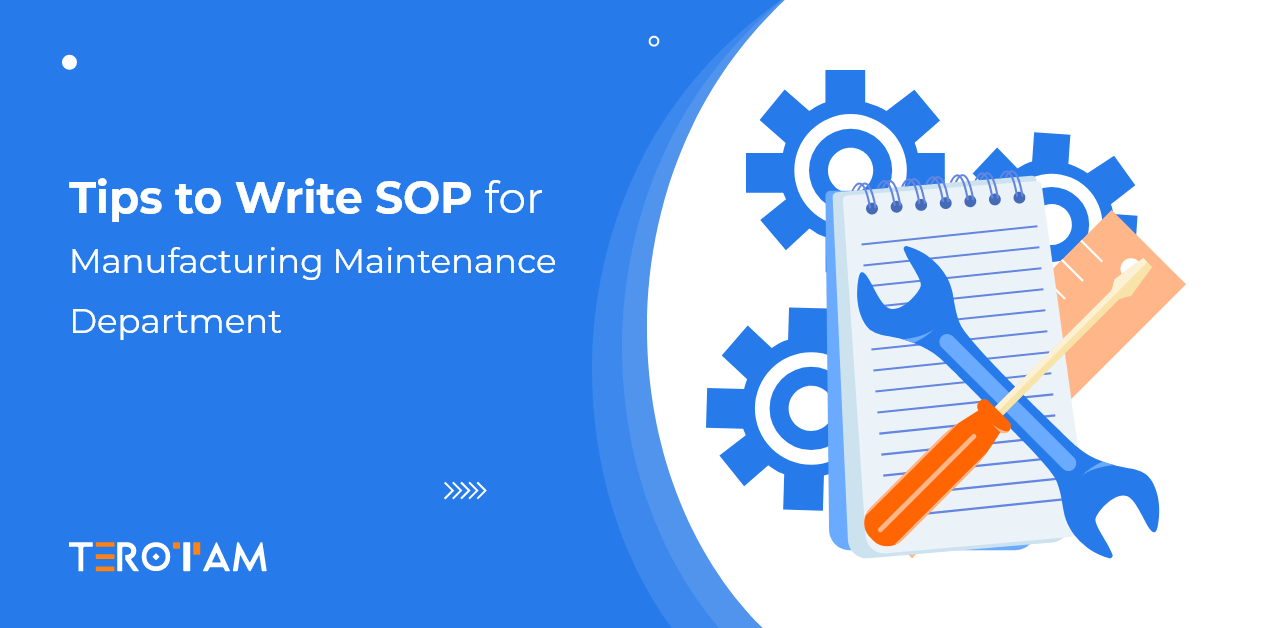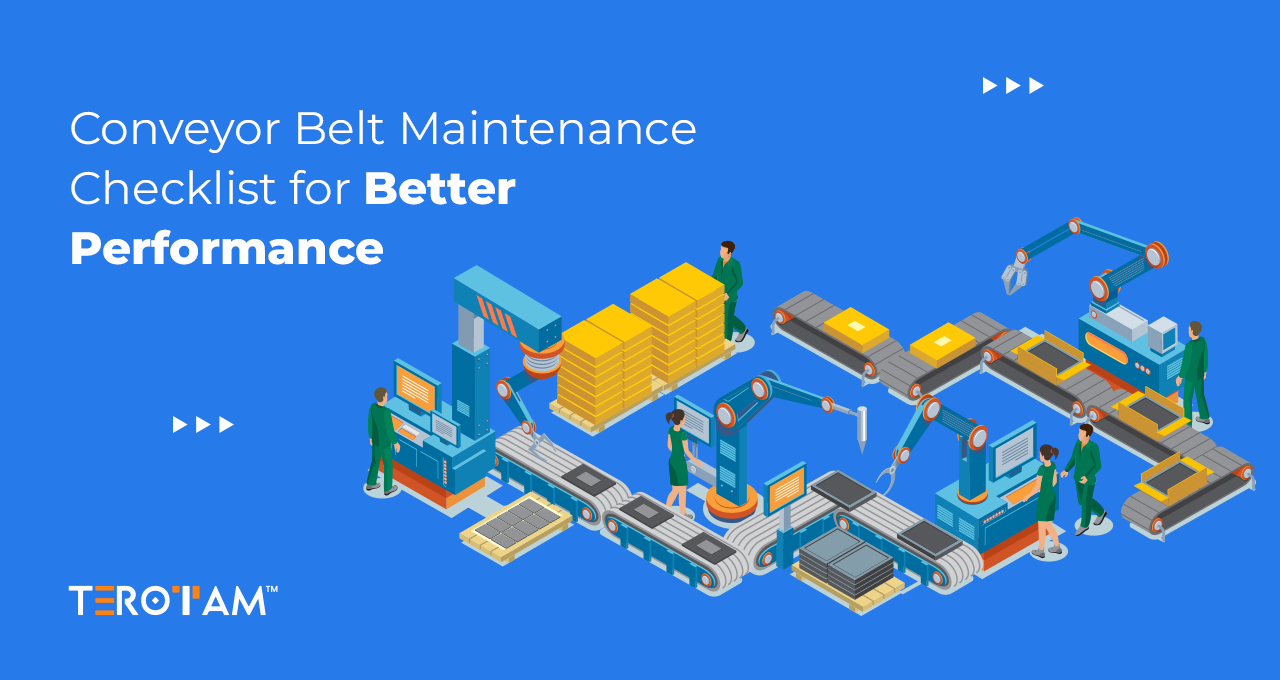Maintenance management is such a field of operation where having a clear SOP is of very much importance for maintaining consistency, safety, and efficiency. When there’s no standardized procedure to follow, different team members might approach tasks in their own ways, leading to inconsistencies that can cause errors, increased downtime, and safety risks. This lack of uniformity can result in equipment failures, production disruptions, and even costly repairs that could have been avoided.
In such a situation, SOP acts as a reliable guide, ensuring that everyone on the team follows the same steps each time a task is performed. But, for that one must understand that a well written SOP is a must and to understand how it is done, we are discussing a few highlights here in this article.
So, let’s check it out.
Tips to Write an Ideal Maintenance Department SOPs
At the beginning of drafting SOP, it’s important to grasp the purpose of the SOP. Especially when it is concerning to the maintenance management, the SOP should:
- Ensure all maintenance activities are performed consistently and efficiently.
- Reduce the likelihood of errors or oversights during maintenance tasks.
- Provide clear instructions for both routine and emergency maintenance.
- Serve as a training document for new staff.
Having a clear understanding of these goals will shape the content and structure of your SOP. And, post that based on the following ways one can start drafting it.
1. Identify Key Maintenance Activities
Start by listing out all the maintenance activities that are critical to your manufacturing process. This includes:
- Routine Maintenance: Regular inspections, lubrication, adjustments, and minor repairs that keep equipment running smoothly.
- Preventive Maintenance: Scheduled tasks based on equipment usage, time, or condition to prevent failures.
- Predictive Maintenance: Monitoring equipment conditions in real-time to predict when maintenance should be performed.
- Corrective Maintenance: Unplanned repairs when equipment fails or malfunctions.
- Shutdown Maintenance: Maintenance performed during planned shutdowns of the manufacturing process.
Each of these activities will need its own SOP, but for now, focus on the overarching structure that will apply to all of them.
2. Gather Input from Stakeholders
Your maintenance team, engineers, and even machine operators are your best sources of information. Collaborate with them to understand the nuances of each maintenance task.
Ask questions like:
- What are the common issues they face during maintenance?
- What tools and materials are required?
- What are the safety precautions?
- How do they currently perform the tasks?
Incorporating their insights will not only make the SOP more accurate but also ensure it’s practical and user-friendly.
3. Structure the SOP
A well-structured SOP is easy to follow. Here’s a common structure you can use:
a. Title and Purpose:
Clearly state the title of the SOP and its purpose. For example, “SOP for Routine Maintenance of CNC Machines.”
b. Scope:
Define the scope of the SOP. What equipment does it cover? Who is responsible for carrying out the tasks?
c. Responsibilities:
Detail the roles and responsibilities of everyone involved in the maintenance process. This may include maintenance technicians, supervisors, and machine operators.
d. Tools and Materials:
List all tools, materials, and safety equipment required to perform the maintenance tasks.
e. Safety Precautions:
Outline any safety measures that must be taken before, during, and after maintenance. This might include lockout/tagout procedures, use of personal protective equipment (PPE), and ensuring the machine is powered down.
f. Step-by-Step Procedures:
This is the heart of the SOP. Break down the maintenance task into clear, actionable steps. Use bullet points or numbered lists to enhance readability. Be specific—don’t assume the reader knows any shortcuts.
g. Post-Maintenance Checks:
Describe any checks or tests that need to be performed after maintenance to ensure the equipment is functioning properly.
h. Documentation and Reporting:
Explain how the maintenance activity should be documented and reported. This might include filling out a maintenance log, updating a CMMS (Computerized Maintenance Management System), or notifying a supervisor.
i. Review and Approval:
State who is responsible for reviewing and approving the SOP. This ensures the document is up-to-date and accurate.
4. Write in Clear, Concise Language
When writing the SOP, aim for clarity and simplicity. Avoid technical jargon unless it’s necessary, and even then, provide explanations for any complex terms. Remember, the SOP should be understandable by someone with basic training in maintenance.
Use active voice and imperative sentences (e.g., “Inspect the machine for signs of wear” instead of “The machine should be inspected for signs of wear”). This makes the instructions direct and easy to follow.
5. Incorporate Visuals Where Necessary
Diagrams, photos, and flowcharts can be incredibly helpful in an SOP, especially for complex tasks. Visuals provide clarity and can reduce the likelihood of misinterpretation. For example, if a step involves adjusting a component on a machine, include a labeled diagram showing exactly where and how to make the adjustment.
6. Test the SOP
Before finalizing the SOP, have it tested by someone who didn’t help write it. This could be a newer technician or an experienced operator who hasn’t performed the task before. Their feedback will highlight any areas of confusion or steps that need further clarification.
7. Review and Update Regularly
Maintenance processes and equipment can evolve over time, so your SOP should too. Set a schedule for regular reviews—annually or biannually is common—and update the SOP as needed. Encourage feedback from the maintenance team to keep the document relevant and useful.
8. Train Your Team
Once the SOP is finalized, ensure that everyone involved in maintenance is trained on it. This training should include a walkthrough of the SOP, hands-on practice, and an opportunity to ask questions. Make the SOP easily accessible—whether that’s through a printed copy in the maintenance shop or a digital version in your CMMS.
Putting it together
A well-written SOP for maintenance management is more than just a document—it’s a tool that enhances efficiency, safety, and reliability in your manufacturing operations. Using these steps while drafting the SOP for maintenance management, you can create a standardized SOP that empowers your team to perform at their best.Want to know more? – let’s connect our experts or drop a line at contact@terotam.com.








